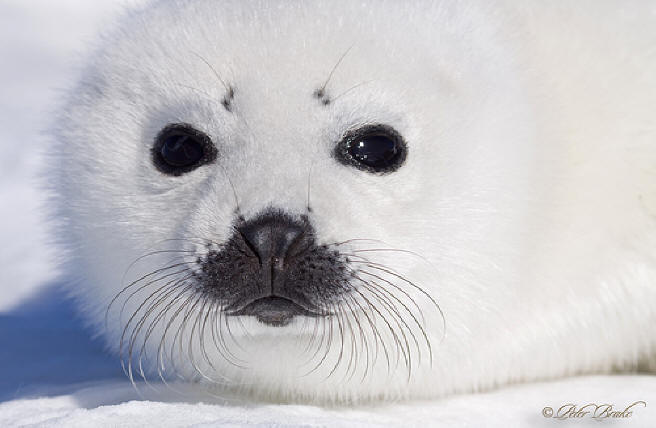Interactions
Harp seals and illness
In the marine world, it is difficult to tell if a seal is ill,
but at zoos illness can easily be caught at a regular visit to
the veterinarian. In one captive harp seal a fatal case of
systemic mycoses, a systematic fungal infection that is zoonotic
which means it is easily spread from one organism to the next. These seals were
killed by histoplamosis
caused by the fungus Histoplasma capsulatum was found. This
disease usually affects organisms that are immune compromised.
(That is why it is most common in people who have AIDS.)
Histoplasmosis can affect all organs, but most commonly it
affects the lungs of its host.
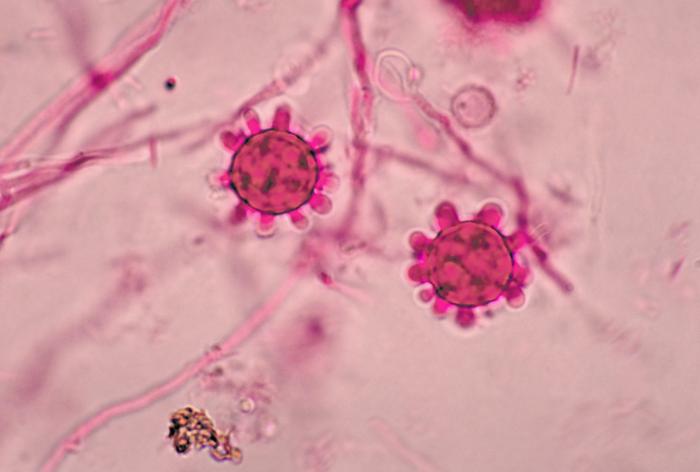
Mucor spp. and Entomophthora spp. have caused fatal diseases
in harp
seals due to poor immune systems as well. Mucor spp. and
Entomophthora are other fungi known for causing a group of
infections most commonly known as zygomycosis. These are
blood-vessel invading fungi that results in blood clotting.
Those clots are not stationary, rather they move through the
blood (embolization), and necrosis of surrounding tissue
also results meaning the tissue in the area of the fungi dies.
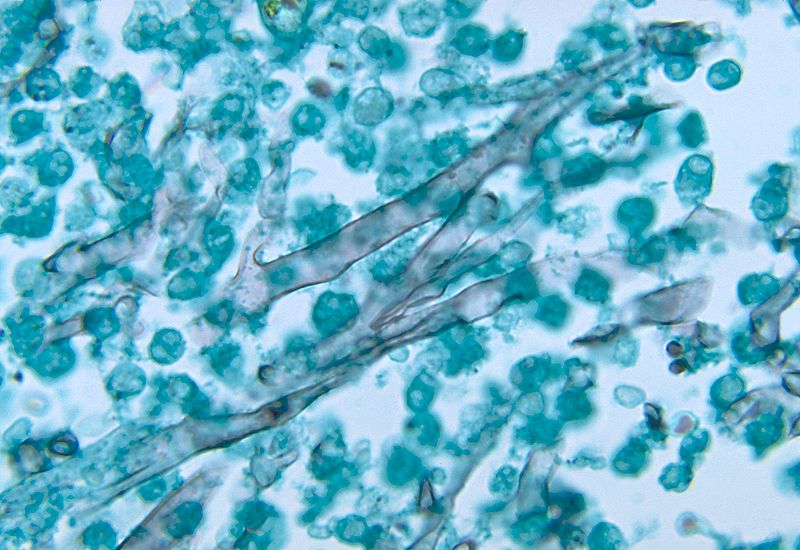
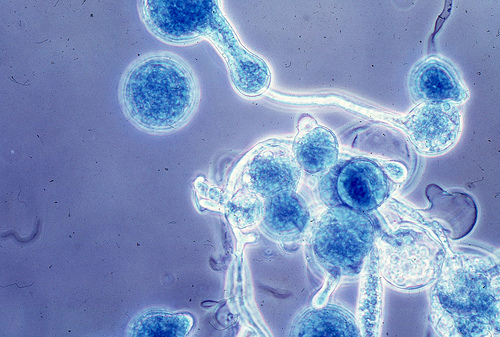
This photo was provided by:
Microbe World
Social Seals
Harp seals are a very social group. It is common to find a
grouping of seals in one location at a time. Seals migrate
together and form their own little colonies. Seals of larger
colonies often break off and form their own new grouping of
seals.
Seal Hunts
Harp seals have been hunted for their meat for a very long
time by the Inuit people. For the Inuit people the hunting was
done using spears, but now the average person would expect seal
hunting to be done with guns. However, this sadly is not true.
Seals are not shot; rather seals are clubbed on the head because
it is too dangerous to shoot on ice. If a bullet were to hit the
ice, it could bounce off and hurt someone on accident. Harp
seals are now hunted using clubs that look like huge mallets or
hammers to crush the skull.
 In Canada, there is an annual slaughter of the harp seal known
as the “Canadian seal hunt”. Hunters go to the breeding grounds
of the seals to kill them for their leathers.
"White coat" killing has been illegal for many years. It is
actually the 13-day-old "blue coats” that can legally be killed,
but this is after their first molt. During this time the total allowance
for seals killed in the
hunt is 275,000 after regulations done in 1997. However in
recent years there has been a severe decline in the Canadian hunt. This is due to a number of factors,
including the low demand for seal
fur, insurance is more expensive, fuel
costs have been on the rise, and the ice has been melting
sooner than it used to making it a difficult task to reach the
breeding grounds.
In Canada, there is an annual slaughter of the harp seal known
as the “Canadian seal hunt”. Hunters go to the breeding grounds
of the seals to kill them for their leathers.
"White coat" killing has been illegal for many years. It is
actually the 13-day-old "blue coats” that can legally be killed,
but this is after their first molt. During this time the total allowance
for seals killed in the
hunt is 275,000 after regulations done in 1997. However in
recent years there has been a severe decline in the Canadian hunt. This is due to a number of factors,
including the low demand for seal
fur, insurance is more expensive, fuel
costs have been on the rise, and the ice has been melting
sooner than it used to making it a difficult task to reach the
breeding grounds.
However, Canada is not the only country where harp seals are
hunted. In Greenland there are no regulations on their seal
hunt. The estimated number of seals that died from 1997-1999
here (in combination with the deaths of seals who were
accidentally caught by fisherman) was 465, 000. That alarming
number is larger than the number of births that are occurring
annually for the harp seal, and people are beginning to worry
about population decline due to hunting. The seal populations,
however, have remained stable at around 5 million (in the gulf
and Newfoundland) thus meaning a 500,000 loss over 3 years is
about a 3 p;ercent loss due to hunting.
Just like Canada many other countries are facing the issues of
seal hunting. Norway has also passed laws allowing only certain
amounts to be killed, and none of them can be suckling. However,
these regulations were not followed 100% by hunters. In
Russia there was a bill to ban the slaughter of seals and
received 273 votes to 1 object; unfortunately it never passed
because President Vladimir Putin vetoed it.
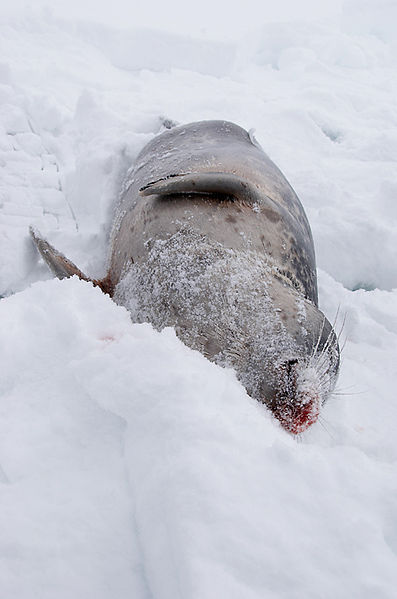
Harp seals, along with many other animals, are being blamed by
fisherman for the dramatic drop in numbers of fish over the
years. In Newfoundland, fisherman are pushing to have a
free for all killing spree of millions of harp seals in order to
help their businesses. However, research has proven that the
decline of fish was most likely due to overfishing and not to
the large population of harp seals in the area. (Ironically this
overfishing will most likely also cause a decline in the harp
seal populations because of the smaller food source.)
Furthermore, harp seals are known for having a very varied diet,
and thus killing them would have a very negative impact on the
marine food web and in return hurt their fishing industry even
further. Other efforts have been put forward to get the quota of
seals allowed
Photo provided by Anouk Striche
to be hunted up as well such as selling seal penises as
aphrodisiacs in a Chinese market. This likely is not going to
happen because of the inexistent market for other seal products
leaving the rest of the body to rot, as well as the fact that
this process is gruesome.
For more information about harp seals as a nutrient source,
follow this link!
NUTRITION
